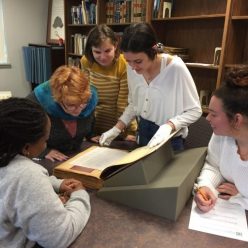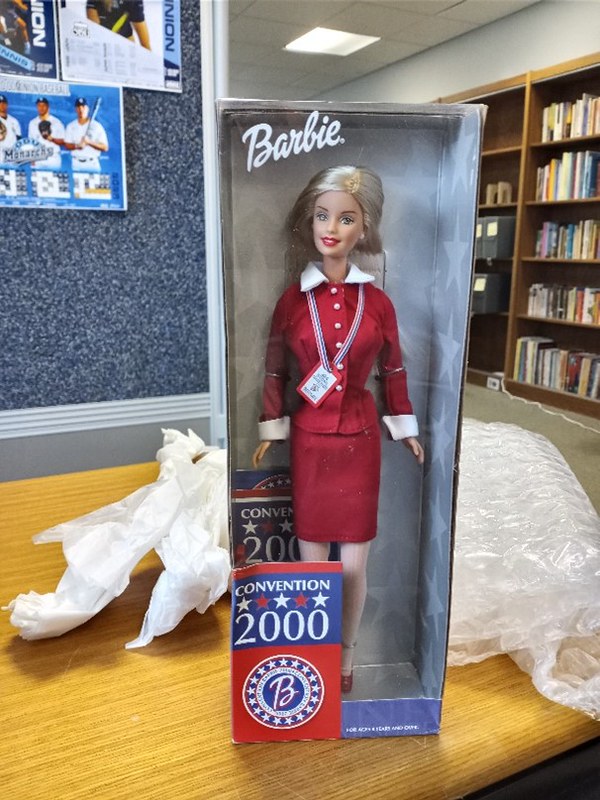by Special Collections Metadata Specialist Kathleen Smith
The annual summer blockbuster movie season is here. A lot of interesting movies are coming out for summer 2023. The movies include the final installment of the Indiana Jones movie series (Indiana Jones and the Dial of Destiny), a Pixar animated movie featuring the elements of nature (Elemental), a biopic about a famous physicist (Oppenheimer), and a movie based on a well-known fashion doll (Barbie). The latter is a fantasy movie featuring actor Margot Robbie in the title role alongside Ryan Gosling who stars as Barbie’s boyfriend, Ken.
Besides having her own movie, Barbie is a well-known worldwide pop-culture icon, a stylish doll who can be anything and anyone that a young child can imagine. I had many Barbie dolls and accessories as a child myself. Amongst the many Barbies I had was, Malibu Barbie in her aqua bikini swimsuit, Western Barbie in a silver and white cowgirl bodysuit, and Kissing Barbie-a doll that actually “kissed” and came with her own special lipstick.
Here’s a brief history of Barbie, she was created in 1959 as an alternative to the traditional baby dolls and paper dolls. Barbie’s creator, toy company executive Ruth Handler, saw her daughter Barbara playing with paper dolls. Barbara often assigned the dolls with adult roles. Handler saw this and realized a grown-up doll would have potential in the toy doll market and with some inspiration from a German “adults-only” toy doll named Bild Lili, the Barbie doll was born. For over sixty-years, Barbies have come in a variety of identities and career roles (from Ballerina to Superstar to Astronaut to Doctor, etc.), as well as representing diverse backgrounds and cultures. Also there have been special edition Barbies as famous women in history, art, science, and athletics, as well as representing special occasions and events.
While processing the newly acquiesced Margo Horner political memorabilia collection, I have come across very unique and interesting items such as campaign buttons featuring Miss Piggy and Kermit the Frog, nail files with candidates’ names on them, a liquor decanter made to look like the Democratic donkey, Hillary Clinton and Ruth Bader Ginsburg action figures, as well as boxes of Kraft Macaroni & Cheese honoring the 1996 Democratic National Convention. I have also come across a Barbie doll-yes you read right-a Barbie doll. The Barbie that I found was a “Convention 2000 Barbie” that commemorated the 2000 Democratic National Convention in Los Angeles. This Barbie is dressed in a sharp, professional red dress and wearing a lanyard pass that reads “2000 National Convention- ‘B’ [B as in Barbie]-Delegate.” On the back of box which is blue, there is information about this special Barbie, which was presented to delegates who attended the convention from August 14-17, 2000 (the same Barbie was also presented to delegates in a red box at the 2000 Republican National Convention in Philadelphia, Pennsylvania). Margo Horner was a delegate at this convention, representing Arlington, Virginia. Horner has attended numerous Democratic National Conventions as a delegate, including New York City, 1980; Chicago, 1996; Denver, 2008; and 2012 Charlotte.
Sources
Ruth Handler (creator of Barbie)
Bild Lili (Barbie’s prototype)
2000 National Convention Barbie (Republican National Convention)






